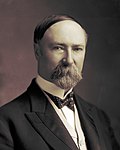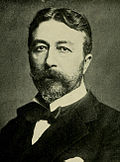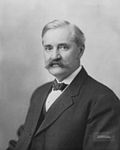This article needs additional citations for verification .(January 2017) |
| 1908 presidential election | |
  Nominees Taft and Sherman | |
| Convention | |
|---|---|
| Date(s) | June 16–19, 1908 |
| City | Chicago, Illinois |
| Venue | Chicago Coliseum |
| Chair | Henry C. Lodge |
| Candidates | |
| Presidential nominee | William Howard Taft of Ohio |
| Vice-presidential nominee | James S. Sherman of New York |
| Voting | |
| Total delegates | 980 |
| Votes needed for nomination | 491 |
| Results (president) | Taft (OH): 702 (71.63%) Knox (PA): 68 (6.94%) Hughes (NY): 67 (6.84%) Cannon (IL): 58 (5.92%) Fairbanks (IN): 40 (4.08%) La Follette (WI): 25 (2.55%) Foraker (OH): 16 (1.63%) Roosevelt (NY): 3 (0.31%) Abstaining: 1 (0.10%) |
| Ballots | 1 |
The 1908 Republican National Convention was held in Chicago Coliseum, Chicago, Illinois on June 16 to June 19, 1908. It convened to nominate successors to President Theodore Roosevelt and Vice President Charles W. Fairbanks.
Contents
- The Platform
- Speakers
- June 16
- June 17
- June 18
- June 19
- Presidential nomination
- Presidential candidates
- Withdrew Before Convention
- Declined to Seek Nomination
- Vice Presidential nomination
- Vice Presidential candidates
- Declined to Seek Nomination 2
- See also
- References
- Works cited
- External links
U.S. Secretary of War William Howard Taft of Ohio won Roosevelt's endorsement and received the presidential nomination. The convention nominated New York Representative James S. Sherman to be his vice presidential running mate.






















